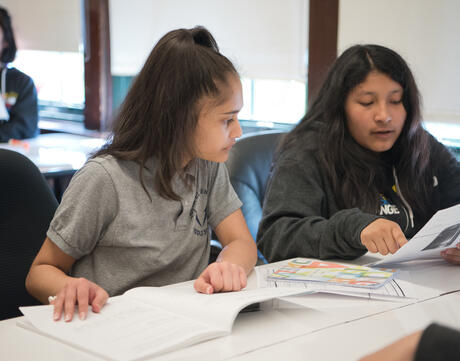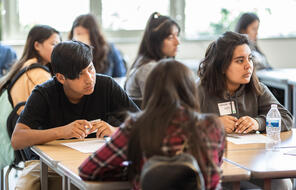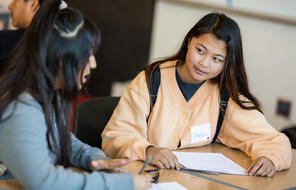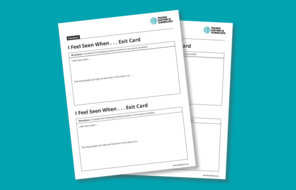
Feeling Seen: A Matter of Perspective
At a Glance
Language
English — USSubject
- English & Language Arts
Grade
6–7Duration
One 50-min class period- Culture & Identity
Overview
About This Lesson
In this lesson, students will explore the ways in which we respond to difference and how accepting the labels that others impose on us can impact our perception and understanding of others and ourselves. The activities and resources in this lesson introduce and support perspective-taking through close reading and analysis of a character’s identity, sense of self, motivations, and feelings. Through this analysis, students will have opportunities to consider how taking the time to understand someone else’s perspective can broaden our understanding of others and the world around us.
Preparing to Teach
A Note to Teachers
Before teaching this lesson, please review the following information to help guide your preparation process.
Lesson Plan
Activities
Materials and Downloads
Quick Downloads
Download the Files
Download allGet Files Via Google
Feeling Seen: A Matter of Perspective
How Do Others See Me?
Finding Belonging in the World
Unlimited Access to Learning. More Added Every Month.
Facing History & Ourselves is designed for educators who want to help students explore identity, think critically, grow emotionally, act ethically, and participate in civic life. It’s hard work, so we’ve developed some go-to professional learning opportunities to help you along the way.
Exploring ELA Text Selection with Julia Torres
On-Demand

Working for Justice, Equity and Civic Agency in Our Schools: A Conversation with Clint Smith
On-Demand

Centering Student Voices to Build Community and Agency
On-Demand
















